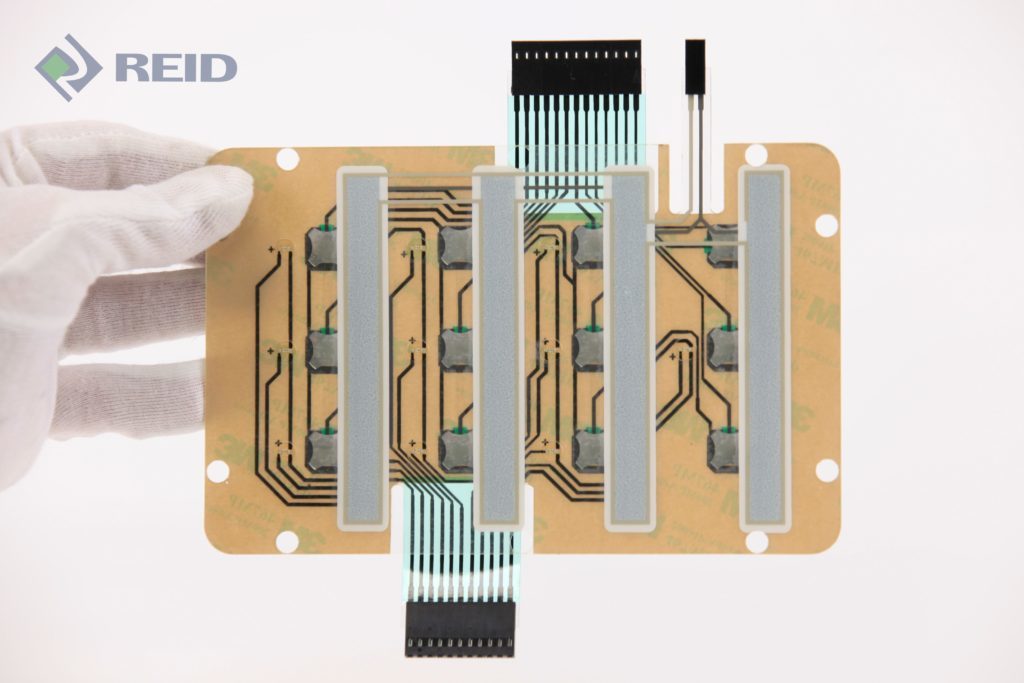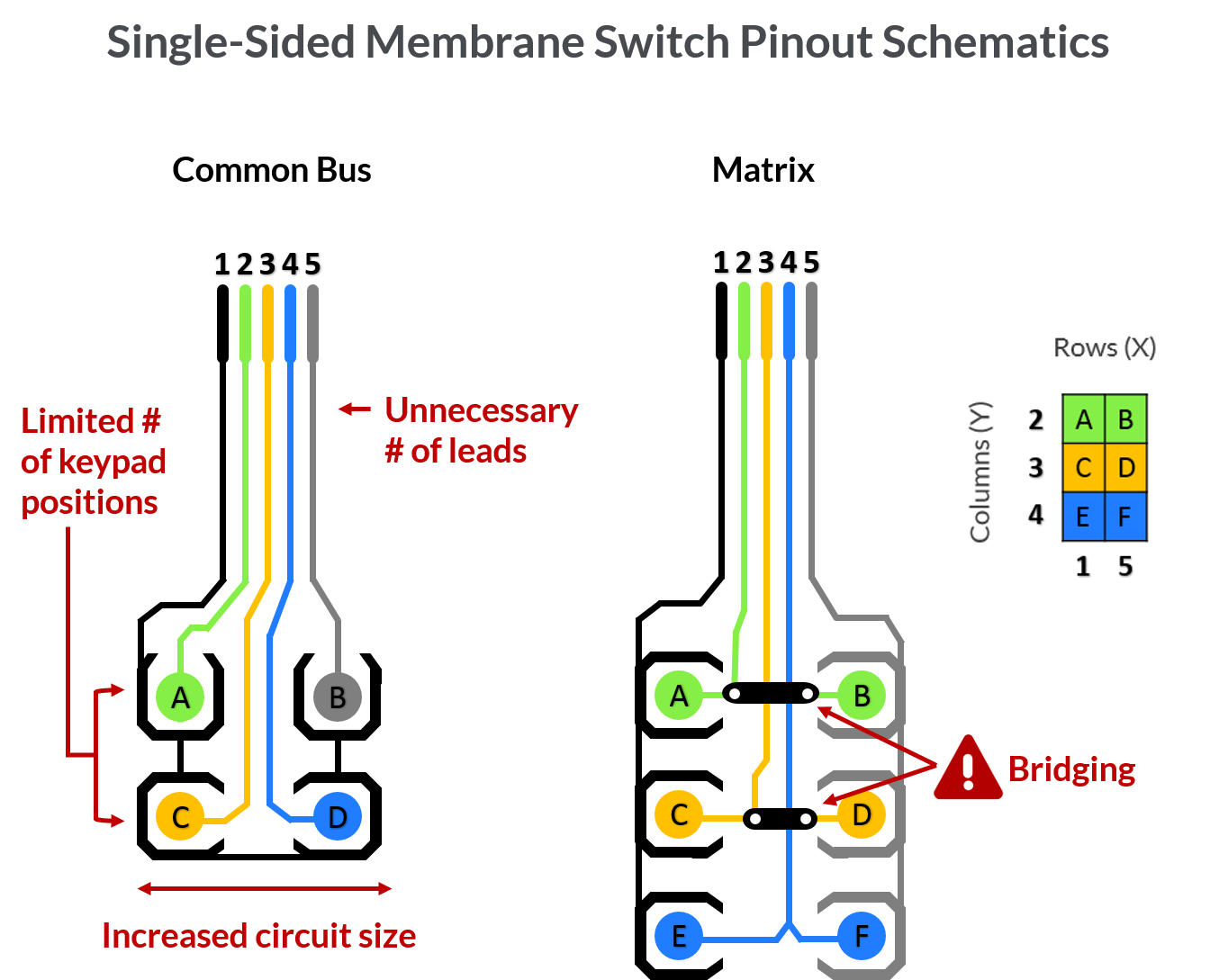A Comprehensive Guide to Membrane Switch Design and Manufacturing
A Comprehensive Guide to Membrane Switch Design and Manufacturing
Blog Article
Comprehending Membrane Layer Switches Over: The Key to Durable and Dependable Controls
Membrane switches over stand for an important element of modern user interface style, blending functionality with resilience in various applications. These versatile components not just assist in user communication but are likewise crafted to stand up to the rigors of requiring atmospheres, from clinical devices to commercial machinery. Comprehending their building and construction, procedure, and the myriad benefits they offer is crucial for engineers and designers alike. As we check out the complexities of membrane switches, it becomes clear that their duty in improving control systems is both extensive and complicated, questioning concerning exactly how best to leverage their abilities in future innovations.
What Are Membrane Layer Switches?
Membrane switches are an innovative option in the world of interface modern technology, incorporating performance and style flawlessly. These devices function as a user interface in between individuals and digital systems, integrating a number of parts right into a portable style. Generally built from flexible, slim layers of products, membrane layer switches are developed to reply to touch, enabling users to interact with machinery and electronic gadgets effectively.
The primary components of a membrane layer button include a printed circuit layer, graphic overlay, and a spacer layer that stops unexpected activation. The graphic overlay can be customized to reflect brand name identity or user choices, boosting aesthetics while making certain functionality. Membrane buttons are generally made use of in various applications, consisting of medical gadgets, customer electronics, and industrial tools, owing to their longevity and resistance to ecological elements such as wetness and dust.
Among the essential benefits of membrane switches is their ability to endure damage, making them perfect for high-traffic environments. Furthermore, they are lightweight and need marginal room, permitting innovative designs in product growth. In general, membrane layer switches stand for a functional and efficient selection for modern digital user interfaces, marrying technology with user-centric layout principles.

How Membrane Switches Over Work
The operation of membrane layer switches over rest on a straightforward yet efficient device that converts individual input into electronic signals. These switches consist of multiple layers, commonly consisting of a graphic overlay, a spacer layer, and a circuit layer. When an individual presses the button, the top layer flaws, enabling a conductive component in the circuit layer to make contact with a matching conductive pad on the bottom of the visuals overlay. This get in touch with shuts the circuit and sends out a digital signal to the gadget, showing that the switch has actually been turned on.
The style of membrane buttons can differ, yet they frequently incorporate domes or responsive aspects to give feedback to the individual, improving the overall experience. The materials utilized in membrane layer buttons, such as polyester or polycarbonate, add to their resilience and resistance to ecological factors, including dampness and dirt. Additionally, the printed circuits are typically enveloped, which safeguards them from wear and tear in time.

Benefits of Membrane Layer Buttons
One of the primary benefits of membrane layer switches is their convenience in style, enabling them to be personalized to fulfill particular customer needs and aesthetic requirements. This flexibility reaches various markets, where different shapes, dimensions, and shades can be employed to enhance user interaction and visual appeal.
In addition, membrane layer buttons are understood for their toughness. Created from durable materials, they are resistant to dirt, dampness, and physical wear, which dramatically expands their life her explanation expectancy contrasted to traditional mechanical buttons. This sturdiness makes them particularly ideal for high-traffic settings and applications calling for longevity.

Moreover, membrane layer buttons provide a structured account, causing a thinner design that can be incorporated into various tools without including bulk. This feature not just enhances the visual charm yet also adds to an extra ergonomic product layout.

Applications of Membrane Layer Switches
User-friendly and flexible, membrane layer switches discover applications throughout a variety of industries, consisting of medical tools, consumer electronic devices, and industrial devices. In the clinical area, these switches are integral to tools such as diagnostic equipment, person monitoring systems, and mixture pumps, where dependability and ease of cleansing are crucial. Their capacity to preserve and hold up against harsh atmospheres capability makes them suitable for such applications.
In customer electronic devices, membrane layer buttons are made use of in products like microwaves, cleaning equipments, and remotes - membrane switch. Their sleek design permits for user-friendly interface, enhancing the overall user experience while providing resilience and resistance to tear and use
Commercial devices additionally profits from membrane layer buttons, particularly in control panels for equipment and automation systems. These buttons use protection against dust and dampness, making sure constant efficiency in challenging settings. Their adjustable attributes allow producers to customize them to particular functional demands, improving efficiency and functionality.
Choosing the Right Membrane Layer Change
When picking a membrane layer button, it is important to think about numerous factors that influence efficiency and suitability for details applications. The main factors to consider include ecological problems, responsive feedback, toughness, and style specifications.
First, examine the operating atmosphere; buttons subjected to pop over to this web-site dampness, chemicals, or severe temperature levels call for particular materials to guarantee durability and performance. Next, examine the demand for tactile feedback. Depending on customer interaction, some applications might gain from a tactile feedback to confirm activation, while others may choose a non-tactile style for visual factors.
Toughness is one more vital factor; membrane layer buttons must be designed to stand up to regular use, effects, and abrasion. Make certain the selected switch can endure the anticipated lifecycle, particularly in high-usage circumstances.
Verdict
Finally, membrane switches function as crucial elements in the layout of reputable and durable control systems across numerous sectors. Their small design, incorporated with robust building and construction and adjustable features, boosts user communication while ensuring durability sought after settings. The versatility of membrane changes permits customized remedies that satisfy certain functional needs, reinforcing their significance in modern innovation. membrane switch. As industries remain to develop, the importance of integrating reliable membrane layer switch remedies can not be overstated.
Membrane layer switches stand for an important element of contemporary interface style, blending performance with resilience in numerous applications.Membrane switches are an innovative remedy in the realm of individual interface technology, integrating functionality and style perfectly. Typically created from versatile, thin layers of products, membrane buttons are made to react to touch, enabling customers to connect with machinery and electronic tools effectively.
The design of membrane buttons can differ, however they commonly include domes or responsive components to supply feedback to the individual, boosting the general experience.In final thought, membrane switches over offer as vital elements in the style of resilient and trusted control systems across various sectors.
Report this page